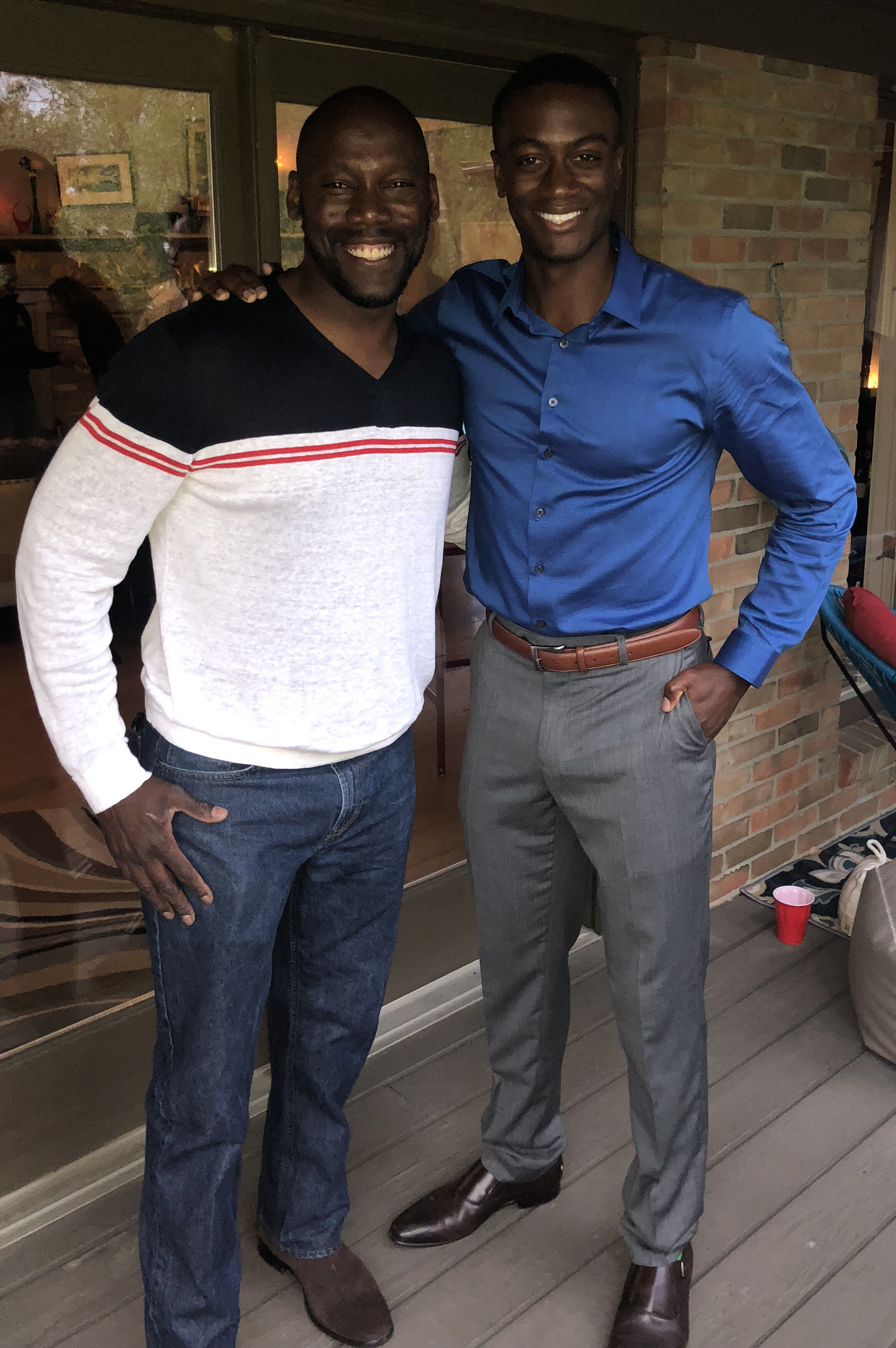What I Learned From A Two-Time Olympian
What I learned from a two-time Olympian…“Mom, the Olympic trials are on!” I yelled upstairs. When you combine my mother, sister, and I, almost 30 years of running track fandom avidly stared at the screen. “Bang,” the gun sounded on the tv, and there appeared Khadevis “KD” Robinson, 4-time U.S. Olympic Champion, out to set the early pace. Prior to the start of the race, the commentator announced his 8-month-old son, Zion, was in the crowd watching. That pressure didn’t seem to faze him, as he took the pace out hard with his unique upright stride and robotically pristine form. 50.33, the clock read, as the crescendo of the bell rang signaling the commencement of the second and final lap. KD made a strong move to increase his lead as his fellow Nike teammate, Lopez Lomong, began coming up on his shoulder. 200 meters to go before the finish, KD’s powerful stride crushed the track underneath him. Strong finisher—Nick Symmonds—in the back of the pack had now found some room to maneuver. 100 meters to go—a straight away to decide who would be representing the United States in Beijing, the pack began closing the gap on KD. First, Nick Symmonds flew by, and then six-foot-five, Andrew Wheating, a University of Oregon product, galloped pass Khadevis. As the line approached, it was between KD and Christian Smith, another Oregon Duck, for the final USA Olympic team spot. At the line, Christian Smith hurled himself over as he crashed to the ground.Symmonds.Wheating.Smith.Those were the ones going onto Beijing. It was an Oregon sweep—1.2.3.Years later, I read out the name “Coach Khadevis Robinson” on the door. A smile began to form from my lips. My standing in front of that door was thanks to one person. Coach Karen Dennis, one of only 5 female Directors of a Power-5 Track & Field conference program, became a mentor and mother figure from the moment we were first introduced four years ago. She knew more than anyone my love for track, coaching, and mentoring, and so, she gave me the opportunity of a lifetime. She spoke with Coach Robinson and he agreed to bring me on as a volunteer assistant coach in my last semester of medical school. I had dreamed about this over and over—the opportunity to coach at The Ohio State, to run alongside the young Buckeye athletes, to tell them I believed in them right before their darkest moment and hardest set. However, the dream never dared to include working with one of my track and field idols. I remember our first encounter like it was yesterday. Two enthusiastic men embracing as we began sharing our experiences about the sport we treasure. I asked him multiple questions about his training philosophy which he returned with answers followed by questions revolving around what type of doctor I wanted to be. After that meeting, I knew he respected me as a man, a former student-athlete, and a medical student but I wasn’t sure he fully trusted me as his new assistant coach. Early on, during a workout, when one of our athletes seemed to slow her pace down prior to the expected finishing point he thought I had told her to stop. I mentioned to him that I had not, and we moved on. As I reflect, I realize he was taking quite a risk bringing me on-board because if we had not had a harmonious relationship the student-athletes, the team & the coaching staff would have suffered from a potentially negative environment.Whatever my past achievements were before, he taught me that success is non-transferrable. I don’t mean you can’t be successful in multiple fields because you can. But just because you are successful in one field, it doesn’t automatically transfer over to another. You have to earn respect in any fresh sphere with which you enter, with each promise fulfilled, one step at a time. Despite having garnered All-American Collegiate accolades, being named captain of my university team and being an assistant coach at my high school alma mater, I had to prove I could be successful at this level—to him, to the athletes and just as importantly, to myself. My greatest asset to the team and my student-athletes was my energy and enthusiasm as evidenced by my 6:00 AM boisterous yells booming across the infield covering all four sides of the track. If the student-athletes weren’t awake when they arrived to practice they certainly were by 6:10AM. But, in conjunction with my blaring voice I had a softer, gentler voice I used to encourage athletes dealing with adversity, reassuring them that their goals were just on the other side of their adversity. As the season continued, Coach Khadevis & I continued to grow closer. It wasn’t only the time on the track that transformed our relationship. It was the casual conversations during meals, the track & field team trips together and the jokes we created that made all the difference. Whether it was from our back & forth taunts about whose fraternity was better, to Coach KD’s incomparable dance moves to Coach Karen having to yell at us both to not run alongside our athletes during competitions due to our mutual excitement, a unique bond formed.Two Big Ten Championships, many laughs, and two seasons later I sat in his office a few weeks prior to leaving for Oregon to start my medical residency. Talking casually, Khadevis brought up that Olympic race from 2008 which was the very race I watched 10 years ago with my mother. “I had to come back,” he said. “There was no way I could let my son see me fail. No way was my last race going to be anything less than me making another Olympic team. So, I let my setback set the stage for my comeback…And I made the Olympic team in 2012.”
